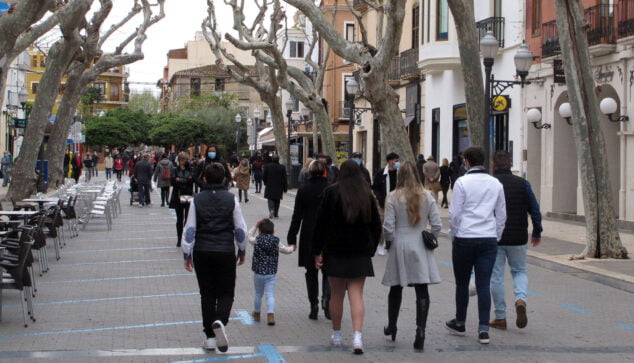These are the neighborhoods of Dénia where more residents have higher education, and where less
The National Institute of Statistics published a few days ago the first part of the 2021 Census, in which several highly relevant data (some more curious than relevant) on the population of Dénia, as well as the rest of the Spanish municipalities, are collected. Among the large amount of data updated with this latest study, one can observe the large differences between the percentages of the population with higher education depending on the neighborhood of the city in which they reside.
Dénia is one of the municipalities with the highest percentage of inhabitants with higher education in the Marina Alta. Most of its neighborhoods have close to 30% of the population with this level of training, while other of the large regional centers, such as Xàbia or Calp, are located over 20% (in these cases, only the outskirts of Calp, inland and south, exceed that 20% by two decimal places).
Training outside the core of Dénia
However, in the regional capital there are big differences depending on the neighborhood you look at. According to the INE, the district where there is the largest population with higher education in the city, and which coincides with being the place where the highest percentage of population with higher education in the entire Marina Alta is concentrated, is Les Rotes. On the exclusive southern coast of Dénia, 46,6% of the residents have this level of training. It is closely followed by the first section of the It montgó (camí Sant Joan and Campusos), with 40,1%.
The rest of the Montgó, as well as Burrows South, Santa Paula y Vessanes reach 39% of the population with higher education, Marines 35,85%, and La Pedrera, La Sella y Jesús Pobre 32,5%. These are the suburban districts with the highest rate of training. The entire area located between the Ondara straight line and Camí de Gandia has a percentage of 27,6, while The Xara remains at 26,1%.
Training in the urban area
Within the urban area, the neighborhood with the highest percentage of residents with higher education is center, between the Castle and La Vía street, which has 36,9%. they follow him Port, with 35,8%, and the surroundings of París square and first half of Marquesado, with 30,1%. They exceed 27% under the sea (27,4), the surroundings of Pare Pere and Carrer Major (27,6) and Lantern-Diana (27,0)
The rest of the neighborhoods of Dénia exceed 20% of inhabitants with higher education, exception from two districts. On the one hand, the area between Patricio Ferrándiz and Saladar, from Plaza París to Calle Diana, where only 17,8% of the population has a higher degree. The other is the stretch between Carrer Sagunt and Avenida Montgó, with only 15,6%.
What degrees are considered higher education?
The INE recognizes as a population with higher education that which has completed higher or equivalent vocational training, university degrees and postgraduate training.
